
 |
Looking Back: 50 Years of Computer Science at MIT Researchers from the early years of computer science reminisce about the founding of Project MAC and the establishment of computer science as an area of research. Featuring Robert Fano, Fernando Corbato, Jack Dennis, Marvin Minsky, Patrick Winston, Gerry Sussman, and Joel Moses. |
|
 |
PI Reflections: CSAIL Today and the Future of Computing Current members of CSAIL talk about what research problem they most want to solve, and what makes CSAIL such a special place. |
|
 |
Tomás Lozano-Pérez, L. Rafael Reif, Daniela Rus: Welcome and Opening Remarks The opening of "Computing the Future," a celebration of fifty years of computer science and artificial intelligence at MIT. |
|
 |
Open Discussion Attendees of "Computing the Future" are given the opportunity to ask questions and discuss the ideas presented in the talks. |
|
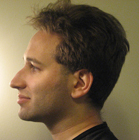 |
Scott Aaronson Associate Professor, MIT Quantum Computing and Fundamental Physics Scott Aaronson is an Associate Professor of Electrical Engineering and Computer Science at MIT. Before that, he did a PhD in computer science at UC Berkeley, as well as postdocs at the Institute for Advanced Study, Princeton, and the University of Waterloo. His research focuses on the capabilities and limits of quantum computers, and more generally on the connections between computational complexity and physics. Aaronson is known for his blog as well as for founding the Complexity Zoo (an online encyclopedia of complexity classes); he’s also written about quantum computing for Scientific American and the New York Times. His first book, Quantum Computing Since Democritus, was published this year by Cambridge University Press. He’s received the Alan T. Waterman Award, the PECASE Award, and MIT’s Junior Bose Award for Excellence in Teaching. |
|
 |
Rodney Brooks Founder, Chairman and CTO, Rethink Robotics Fifty Years of Robotics; Now the Practical Payoff Rodney Brooks is the founder, chairman, and CTO of Rethink Robotics, a company that is deploying low cost, safe, and easy to train interactive humanoid robots in manufacturing and packaging applications. He was also cofounder, CTO, and board member of iRobot Corporation (nasdaq: IRBT) and is the emeritus Panasonic Professor of Robotics at MIT, where he was director of the MIT Computer Science and Artificial Intelligence Laboratory (CSAIL) until 2007. Earlier he was on the faculty at Stanford University and a member of research staff at both Carnegie Mellon and MIT. He received his PhD in Computer Science from Stanford in 1981, after earning degrees in mathematics at the Flinders University of South Australia. He is a member of both the US National Academy of Engineering and of the American Academy of Arts and Sciences, and also a Fellow of the IEEE, ACM, AAAI, and AAAS. |
|
 |
William J. Dally Professor (Research) of EE and CS, Stanford University and Chief Scientist and Senior Vice President of Research, NVIDIA Corporation The End of Moore's Law and the Future of Computing Bill is Chief Scientist and Senior Vice President of Research at NVIDIA Corporation and a Professor (Research) and former chair of Computer Science at Stanford University. Bill and his group have developed system architecture, network architecture, signaling, routing, and synchronization technology that can be found in most large parallel computers today. While at Bell Labs Bill contributed to the BELLMAC32 microprocessor and designed the MARS hardware accelerator. At Caltech he designed the MOSSIM Simulation Engine and the Torus Routing Chip which pioneered wormhole routing and virtual-channel flow control. At the Massachusetts Institute of Technology his group built the J-Machine and the M-Machine, experimental parallel computer systems that pioneered the separation of mechanisms from programming models and demonstrated very low overhead synchronization and communication mechanisms. At Stanford University his group has developed the Imagine processor, which introduced the concepts of stream processing and partitioned register organizations, the Merrimac supercomputer, which led to GPU computing, and the ELM low-power processor. Bill is a Member of the National Academy of Engineering, a Fellow of the IEEE, a Fellow of the ACM, and a Fellow of the American Academy of Arts and Sciences. He has received the ACM Eckert-Mauchly Award, the IEEE Seymour Cray Award, and the ACM Maurice Wilkes award. He currently leads projects on computer architecture, network architecture, circuit design, and programming systems. He has published over 200 papers in these areas, holds over 90 issued patents, and is an author of the textbooks, Digital Design: A Systems Approach, Digital Systems Engineering, and Principles and Practices of Interconnection Networks. |
|
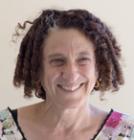 |
Cynthia Dwork Distinguished Scientist, Microsoft Research On the Benefits of Coordination – Before, During, and Even After the Fact! – in Differential Privacy Cynthia Dwork, Distinguished Scientist at Microsoft Research, is renowned for placing privacy-preserving data analysis on a mathematically rigorous foundation. A cornerstone of this work is differential privacy, a strong privacy guarantee frequently permitting highly accurate data analysis. Dr. Dwork has also made seminal contributions in cryptography and distributed computing, and is a recipient of the Edsger W. Dijkstra Prize, recognizing some of her earliest work establishing the pillars on which every fault-tolerant system has been built for decades. She is a member of the National Academy of Engineering and a Fellow of the American Association for the Advancement of Science.
|
|
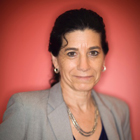 |
Deborah Estrin Professor of Computer Science, Cornell Tech Small, n=me, data Deborah Estrin, PhD(MIT 1985), is a Professor of Computer Science at Cornell Tech (http://tech.cornell.edu/deborah-estrin), Professor of Public Health at Weill Cornell Medical College, and co-founder of Open mHealth (http://openmhealth.org/). Deborah was previously at UCLA directing the NSF Center for Embedded Networked Sensing. She is a pioneer in networked sensing, using mobile and wireless systems to collect and analyze real time data about the physical world and the people who occupy it. Her current focus is on mobile health and small data, leveraging the pervasiveness of mobile devices and digital interactions for health and life management (see TEDMED https://smalldata.tech.cornell.edu/). She is a member of the American Academy of Arts and Sciences and the National Academy of Engineering.
|
|
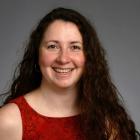 |
Polina Golland Distinguished Alumnus 1964 Career Development Associate Professor, MIT EECS Modeling Brain Connectivity from Functional MRI Polina Golland is an associate professor in the EECS Department and the Computer Science and Artificial Intelligence Laboratory (CSAIL) at MIT. Her primary research interest is developing novel techniques for image analysis and understanding in the context of biomedical imaging. Polina got her PhD from MIT and her Bachelor and Masters degree from Technion, Israel. She is an associate editor of IEEE Transactions on Pattern Analysis and Machine Intelligence an IEEE Transactions on Medical Imaging. She has worked on various problems in computer vision, motion and stereo, shape modeling and representation, predictive modeling and visualization of statistical models. Her current research focuses on modeling biological shape and function using images (from MRI to microscopy) as a source of information. |
|
 |
Daniel Huttenlocher Dean and Vice Provost, Cornell Tech Graduate Education and Research in the Information Age Dan Huttenlocher is Dean and Vice Provost for Cornell Tech, Cornell University’s new graduate applied science campus in NYC. In this capacity, Dean Huttenlocher oversees the academic quality and direction of the campus’ research, degree programs and faculty recruitment as well as its entrepreneurial initiatives and early stage investor network. Huttenlocher has a mix of academic and industry background, having worked at the Xerox Palo Alto Research Center (PARC), as CTO of Intelligent Markets, as well as being a faculty member at Cornell for two decades. Huttenlocher holds over two dozen U.S. patents and has published numerous technical papers. He received his bachelor’s degree from the University of Michigan and both his Master’s and Doctorate degree from Massachusetts Institute of Technology. He currently serves as Trustee of the John D. and Catherine T. MacArthur Foundation. |
|
 |
Charles Isbell Senior Associate Dean, Professor, College of Computing, Georgia Institute of Technology Some Surprising Lessons Learned while Creating a Real MOOC-based Masters of Science Dr. Charles Lee Isbell, Jr. received his B.S. in Computer Science from Georgia Tech in 1990 and his Ph.D. in Computer Science from MIT in 1998. After four years at AT&T Labs/Research, he returned to Georgia Tech to join the faculty of the College of Computing. Charles' research interests are varied, but recently he has been building autonomous agents that engage in life-long learning when in the presence of thousands of other intelligent agents, including humans. His work has been featured in the popular media, including the New York Times and the Washington Post as well as in technical collections. Charles also pursues reform in computing education. He was a developer of Threads, Georgia Tech’s structuring principle for computing curricula and one of the key developers in Georgia Tech’s new MOOC-supported Masters of Science in Computer Science, the first of its kind in the world. Recently, he has assumed the role of the Senior Associate Dean for the College. |
|
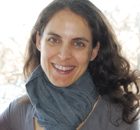 |
Yael Tauman Kalai Researcher, Microsoft Research New England The Evolution of Proofs in Computer Science
Yael Tauman Kalai received her BA (1997) from the Hebrew University in Jerusalem, MA (2001) under the supervision of Adi Shamir at the Weizmann Institute, and PhD (2006) under the supervision of Shafi Goldwasser at MIT. After postdoctoral positions at Microsoft Research and the Weizmann Institute, she is now a Researcher at Microsoft Research New England. Her honors include an outstanding master's thesis prize, a Sprowl's award (cowinner) for best PhD Thesis at MIT. Her research focuses on cryptography |
|
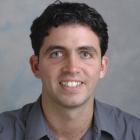 |
Manolis Kellis Van Tassel Career Development Associate Professor, MIT EECS The Analysis Revolution in Genomics and Modern Medicine Manolis Kellis is an Associate Professor of Computer Science at MIT, a member of the Computer Science and Artificial Intelligence Laboratory and of the Broad Institute of MIT and Harvard, where he directs the MIT Computational Biology Group (compbio.mit.edu). His group has recently been funded to lead the integrative analysis efforts of the modENCODE project for Drosophila melanogaster, and also for integrative analysis of the NIH Epigenome Roadmap Project. He has received the US Presidential Early Career Award in Science and Engineering (PECASE) for his NIH R01 work in Computational Genomics, the NSF CAREER award, the Alfred P. Sloan Fellowship, the Karl Van Tassel chair in EECS, the Distinguished Alumnus 1964 chair, and the Ruth and Joel Spira Teaching Award in EECS. He was recognized for his research in genomics as one of the top young innovators under the age of 35 by Technology Review Magazine, one of the principal investigators of the future by Genome Technology magazine, and one of three young scientists representing the next generation in biotechnology by the Boston Museum of Science. He obtained his Ph.D. from MIT, where he received the Sprowls award for the best doctorate thesis in computer science, and the first Paris Kanellakis graduate fellowship. Prior to computational biology, he worked on artificial intelligence, sketch and image recognition, robotics, and computational geometry, at MIT and at the Xerox Palo Alto Research Center. He lived in Greece and France before moving to the US.
|
|
 |
Jon Kleinberg Professor of Computer Science, Cornell University Everyday Life in a Data-Rich World Jon Kleinberg received his AB from Cornell University in 1993 and his PhD from MIT in 1996. He is currently the Tisch University Professor of Computer Science and Information Science at Cornell, where his research focuses on the social and information networks that underpin the Web and other on-line media. He is the recipient of awards including a MacArthur Fellowship, the Nevanlinna Prize, the Lanchester Prize, the ACM SIGKDD Innovation Award, and the ACM-Infosys Foundation Award in the Computing Sciences, and he is a member of the National Academy of Engineering and the National Academy of Sciences. |
|
 |
Tom Knight Chairman, Ginko Bioworks The Right Thing: Things We Hit, Things We Missed, Things Still Left To Do Tom Knight worked in the MIT Electrical Engineering and Computer Science Department as senior research scientist and professor until 2010, focusing on the development of novel computing structures at the technology, architectural, and programming levels. As a computer architect and VLSI designer, he was a founder and technical director at Symbolics, Exa, Polychip, High Speed Solutions, and Scalable Displays. He was responsible for early time-shared operating systems, bitmapped displays, the Lisp Machine, interconnection networks based on expanders, reversible computers, and transactional memory systems. 25 years ago, he started applying his engineering experience to the field of biology, naming his work synthetic biology. In 2002, he developed and popularized the first standardized assembly technique for functional DNA fragments, Biobricks, and established the MIT Registry of Standard Biological Parts, leading to a educational competition, IGEM. He has a continuing interest in understanding, reverse engineering, and rebuilding simple organisms, specifically the mollicute Mesoplasma florum. He is a founder of Ginkgo Bioworks, and, after retiring from MIT, is working there full time. He is a Fellow of the American Association for the Advancement of Science, a director of the IGEM Foundation and of Genspace, and a member of the International Committee on the Taxonomy of the Mollicutes. |
|
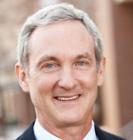 |
Tom Leighton Professor, MIT and CEO, Akamai Technologies Akamai: From Theory to Practice Tom Leighton is a Professor of Applied Mathematics and a member of the Computer Science and Artificial Intelligence Laboratory (CSAIL) at MIT. In 1998, he co-founded Akamai Technologies, where he is currently the CEO and a member of the Board of Directors.
Professor Leighton is a preeminent authority on algorithms for network applications, and has published over 100 papers on algorithms, cryptography, parallel architectures, distributed computing, combinatorial optimization, and graph theory. He also holds numerous patents involving content delivery, Internet protocols, algorithms for networks, cryptography, and digital rights management.
He received his B.S.E. in Electrical Engineering and Computer Science from Princeton in 1978, and his Ph.D. in Applied Mathematics from MIT in 1981, under the direction of Gary Miller. He joined the MIT Mathematics faculty in 1982, and became Professor in 1989.
Professor Leighton has served on numerous governmental, industrial and academic committees. From 2003-05, he served as Chair of the President's Information Technology Advisory Committee on Cyber Security. His many distinctions include the IEEE Babbage Award, the MIT Entrepreneurship Award, the ACM-SIGACT Distinguished Service Prize, and being named as a member of the Massachusetts Innovation & Technology Exchange (MITX) Innovators Hall of Fame and one of the Ten Top Technology Innovators by US News and World Report. Professor Leighton is a Fellow (and Member of the Trust) of the American Academy of Arts & Sciences, a Fellow of the Society for Industrial and Applied Mathematics, and a Member of the National Academy of Engineering and the National Academy of Sciences.
|
|
 |
Matt Mason Professor of Robotics and Computer Science, Carnegie Mellon University Tales from the Blocks World Matt Mason started as a freshman at MIT in 1970, and worked in or around Project Mac from about 1974, with Gerry Sussman, Berthold Horn, and Tomas Lozano-Perez. After finishing his PhD in the Artificial Intelligence Lab in 1982, he moved to Carnegie Mellon University, where he is presently Professor of Robotics and Computer Science, and Director of the Robotics Institute. He is a Fellow of the AAAI, and a Fellow of the IEEE. He is a winner of the System Development Foundation Prize and the IEEE Robotics and Automation Society's Pioneer Award. His research focuses on autonomous robotic manipulation, including force control, robot learning, and most recently re-orienting objects using very simple hands. |
|
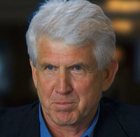 |
Robert Metcalfe Professor of Innovation, The University of Texas at Austin How I invented Ethernet at MIT Project MAC 1969-1972 Bob Metcalfe '68 is an MIT engineer-entrepreneur who made it into the Internet Society's Pioneer Hall of Fame based on work started on the 9th floor of Technology Square at MIT Project MAC in 1970. His Harvard PhD dissertation, Packet Communication, was for work done at Project Mac and was first published as MAC TR #114 -- still available at Amazon.com. Bob went on to the Xerox Palo Alto Research where he led the team that invented Ethernet, of which today over a billion new ports ship annually, if you count WiFi, which Bob does. He next went on to found Silicon Valley billion-dollar networking giant, 3Com Corporation, which after 30 years merged in 2010 into the Hewlett Packard Company. After 3Com, Bob spent the 1990s as a publisher-pundit with IDG InfoWorld and the 2000s as a venture capitalist with Polaris Venture Partners. Bob is a Life Trustee of MIT, a member of the National Academy of Engineering, and received the National Medal of Technology for "leadership in the invention, standardization, and commercialization of Ethernet." Bob has started his fifth 10-year career as Professor of Innovation in the Cockrell School of Engineering at The University of Texas at Austin. His mission is to help Austin be a better Silicon Valley. |
|
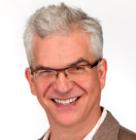 |
Greg Papadopoulos Venture Partner, New Enterprise Associates Turtles All the Way Down Greg joined NEA as Venture Partner in 2010 after more than twenty years of experience in the technology industry and academia. He focuses on early-stage systems, software and semiconductor companies. Prior to NEA, Greg was EVP and CTO of Sun Microsystems, where he guided the company’s $2B R&D portfolio. Before Sun, Greg was an Associate Professor of EECS at MIT, where he worked on massively parallel dataflow computing architectures. He also helped found a number of companies, from video conferencing (PictureTel) to computational fluid dynamics (NASDAQ:EXA), and was an engineer with HP and Honeywell. Greg is an active advisor for the schools of engineering at UCSD, UC Berkeley, and MIT He also serves on the UC Presidents Board for Science and Innovation, and is a trustee for the Computer History Museum. Passionate about technology and its possibilities, Greg is a relentless advocate for diversity in engineering and a supporter of open development models that stimulate communication, inclusiveness and innovation. Greg holds an undergraduate degree from UCSD and an S.M. and Ph.D. from MIT. He also a Senior Fellow of the American Leadership Forum. |
|
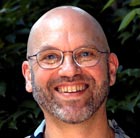 |
Marc Raibert Director, Boston Dynamics Dynamic Robots Marc Raibert is Director of Boston Dynamics, a company that develops some of the world’s most advanced dynamic robots, such as BigDog, Atlas, Cheetah, SandFlea and the AlphaDog. These robots are inspired by the remarkable ability of animals to move with agility, mobility, speed and grace. Before starting Boston Dynamics, Raibert was Professor of Electrical Engineering and Computer Science at MIT from 1986 to 1995. Before that he was Associate Professor of Computer Science and Robotics Institute at Carnegie Mellon from 1980 to 1986. While at MIT and Carnegie Mellon Raibert founded the Leg Laboratory, a lab that helped establish the scientific basis for highly dynamic legged robots. Raibert joined the MIT AI Lab as a graduate student in 1974 and earned a PhD in 1977. He is a member of the National Academy of Engineering.
|
|
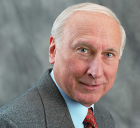 |
Ray Stata Chairman and Co-Founder, Analog Devices, Inc. Reflections of an Entrepreneur on Experiences at MIT Then and Now Mr. Stata was a cofounder of Analog Devices, Inc. (ADI) in 1965 and served as CEO and Chairman until 1996. He now serves as Chairman of the Board. With sales of $2.7B, ADI is recognized for leadership in the design and manufacture of analog and digital signal processing semiconductors. Mr. Stata has been active as an investor in and board member of more than 40 early stage technology based new ventures. Mr. Stata, class of ’57, holds a BSEE and MSEE from MIT. Until 2010 he served for many years as Chairman of the Visiting Committee of the Department of Electrical Engineering and Computer Science and as a member of MIT’s Executive Committee and the MIT Corporation. He also served on the visiting committees for Sponsored Research and for Linguistics and Philosophy. He is presently a member of the Dean of Engineering Advisory Council. He is also actively engaged in MIT’s Venture Mentoring Service which advises students and faculty who wish to become entrepreneurs.
|
|
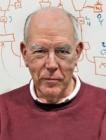 |
Ivan Sutherland Visiting Scientist, Asychronous Research Center, Portland State University Time Sharing vs Personal Computing Ivan Sutherland received a Ph.D. degree from MIT in 1963, He holds honorary degrees from Harvard,, the University of North Carolina, the University of Utah, and Carnegie Mellon University. Dr. Sutherland is a member of both the National Academy of Sciences and the National Academy of Engineering. Dr. Sutherland was the 1988 recipient of the Turing award and the 2012 recipient of the Kyoto Prize in Advanced Technology. Dr. Sutherland is author of over 50 patents, as well as numerous papers. Dr Sutherland makes his home in Portland, Oregon where he works at Portland State University (PSU) in the Asynchronous Research Center (ARC) that he founded with Marly Roncken in 2008. Dr. Sutherland directed the Information Technology Office of the Advanced Research Projects Agency from 1964 to 1966 which sponsored the early Project MAC.
|
|
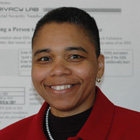 |
Latanya Sweeney Professor of Government and Technology in Residence, Harvard University Harmonizing Technology with Society Professor of Government and Technology in Residence, Professor Sweeney creates and uses technology to assess and solve societal, political and governance problems, and teaches others how to do the same. One focus area is data privacy, and she is the Director of the Data Privacy Lab in IQSS at Harvard. Professor Sweeney is an elected fellow of the American College of Medical Informatics, with almost 100 academic publications, 3 patents, explicit citations in 2 government regulations, and 3 company spin-offs. She has received numerous professional and academic awards, and testified before federal and international government bodies. In 2009, through a national GAO search, she was appointed to the privacy and security seat of the Federal Health Information Technology Policy Committee
|
|
 |
Russ Tedrake X-Consortium Associate Professor of Computer Science and Engineering, MIT Aerial Robots: Computing in the Sky Russ Tedrake is the X Consortium Associate Professor of Electrical Engineering and Computer Science and Aeronautics and Astronautics at MIT, and the Director of the Center for Robotics at the Computer Science and Artificial Intelligence Lab. He is a recipient of the NSF CAREER Award, the MIT Jerome Saltzer Award for undergraduate teaching, the DARPA Young Faculty Award in Mathematics, the 2012 Ruth and Joel Spira Teaching Award, and was named a Microsoft Research New Faculty Fellow. Russ received his B.S.E. in Computer Engineering from the University of Michigan, Ann Arbor, in 1999, and his Ph.D. in Electrical Engineering and Computer Science from MIT in 2004, working with Sebastian Seung. After graduation, he joined the MIT Brain and Cognitive Sciences Department as a Postdoctoral Associate. During his education, he has also spent time at Microsoft, Microsoft Research, and the Santa Fe Institute.
|
|
 |
Antonio Torralba Esther and Harold E. Edgerton Career Development Associate Professor, Electrical Engineering and Computer Science, MIT Teaching Computers to See Antonio Torralba received the degree in telecommunications engineering from Telecom BCN in 1994, Spain and, in 2000, the Ph.D. degree in signal, image, and speech processing from the Institut National Polytechnique de Grenoble, Grenoble, France. He is an Associate Professor of Electrical Engineering and Computer Science at the Computer Science and Artificial Intelligence Laboratory (CSAIL), Massachusetts Institute of Technology (MIT), Cambridge. He serves as Associate Editor of the IEEE Transactions on Pattern Analysis and Machine Intelligence, and of the International Journal in Computer Vision. He received the 2008 NSF Career award, the best student paper award at the IEEE Conference on Computer Vision and Pattern Recognition (CVPR) in 2009, and the 2010 J.K. Aggarwal Prize from the International Association for Pattern Recognition (IAPR). |
|
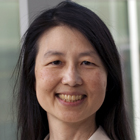 |
Jeannette Wing Corporate Vice President, Microsoft Research Towards a Theory of Trust in Networks of Humans and Computers Jeannette M. Wing is Corporate Vice President, Microsoft Research. She is on leave from Carnegie Mellon University, where she is President's Professor of Computer Science and twice served as the Head of the Computer Science Department. From 2007-2010 she was the Assistant Director of the Computer and Information Science and Engineering Directorate at the National Science Foundation. She received her S.B. and S.M. degrees in Computer Science and Engineering in 1979 and her Ph.D. degree in Computer Science in 1983, all from the Massachusetts Institute of Technology. Professor Wing's general research interests are in the areas of trustworthy computing, specification and verification, concurrent and distributed systems, programming languages, and software engineering. Her current interests are in the foundations of security and privacy. She was or is on the editorial board of twelve journals, including the Journal of the ACM and Communications of the ACM. She is currently Vice Chair of the DARPA Information Science and Technology (ISAT) Board, Chair of the ACM Infosys Award Committee, and member of the Microsoft New Faculty Fellowship Selection Committee. She has been a member of many other advisory boards, including: Networking and Information Technology (NITRD) Technical Advisory Group to the President's Council of Advisors on Science and Technology (PCAST), National Academies of Sciences' Computer Science and Telecommunications Board, ACM Council, Computing Research Association Board, DARPA ISAT, NSF's CISE Advisory Committee, Microsoft Trustworthy Computing Academic Advisory Board, General Electric Academic Software Advisory Panel, and the Sloan Research Fellowships Program Committee. She served as co-chair of NITRD from 2007-2010. She was on the faculty at the University of Southern California, and has worked at Bell Laboratories, USC/Information Sciences Institute, and Xerox Palo Alto Research Laboratories. She spent sabbaticals at MIT in 1992 and at Microsoft Research 2002-2003. She received the CRA Distinguished Service Award in 2011. She is a member of Sigma Xi, Phi Beta Kappa, Tau Beta Pi, and Eta Kappa Nu. She is a Fellow of the American Academy of Arts and Sciences, American Association for the Advancement of Science, the Association for Computing Machinery (ACM), and the Institute of Electrical and Electronic Engineers (IEEE). |
|
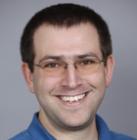 |
Nickolai Zeldovich Associate Professor, MIT The Scalable Commutativity Rule: Designing Scalable Software for Multicore Processors Nickolai Zeldovich is an Associate Professor at MIT's department of Electrical Engineering and Computer Science, and a member of the Computer Science and Artificial Intelligence Laboratory. His research focuses on computer systems, including building parallel systems that can scale to many cores, and building practical systems to improve security, from operating systems and hardware to programming languages and analysis tools. |
|